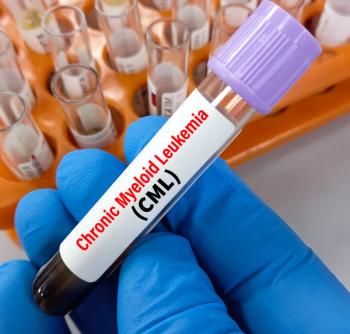
- Immunization Guide for Pharmacists November 2019
- Volume 1
- Issue 5
Exploring Techniques to Increase Vaccination Rates Among Adult Patients with Chronic Disease
Immunization needs for patients aged 19 to 64 years and afflicted with chronic conditions are often overlooked, and necessitate more attention and resources. Pharmacies traditionally do not focus on this patient population; instead often choosing to focus primarily on the population 65 years and over. However, engaging with patients in the 19- to 64-year-old group could go a long way in helping to fill the current immunization void in this population.
Immunization needs for patients aged 19 to 64 years and afflicted with chronic conditions are often overlooked, and necessitate more attention and resources.1 Pharmacies traditionally do not focus on this patient population; instead often choosing to focus primarily on the population 65 years and over. However, engaging with patients in the 19- to 64-year-old group could go a long way in helping to fill the current immunization void in this population. Potentially, it could be the next “big win” for pharmacy immunizations and increase global immunization rates. Two case studies that highlight various methods for identifying patients who may be eligible for immunizations which can be used to improve vaccination rates in this population are presented below.
Case Study #1
A Millennial Patient Requests Refills of Regular Medications
A 26-year-old woman arrived at the pharmacy drop-off window and requested refills of fluoxe- tine and beclomethasone dipropionate hydroflu- oroalkane (HFA) from the pharmacy technician. She stated that she would return to the pharmacy in 20 minutes to pick up her prescriptions.
Was this patient eligible for a vaccination?
PHARMACY PROCEDURES
The pharmacy intern at this site previously created a list of medications and their corresponding conditions and vaccines (see table).2,3 (This list was meant as a helpful guide for pharmacy staff and should not be used as a comprehensive list of medications or immunizations.) It enabled pharmacy staff to screen medication prescriptions and easily determine which would likely classify a patient as having a chronic condition and an associated potential need for a vaccination. The list included common drugs such as metformin or insulin products for diabetes; aspirin and/or β blockers, nitroglycerin, and angiotensin-converting enzyme inhibitors for heart disease; albuterol and/or other related inhalers for asthma or chronic obstructive pulmonary disease; and others, and their associated chronic condition, as well as a potentially eligible vaccine (eg, metformin: diabetes:pneumococcal vaccine).
After reviewing the list of potentially vaccination eligible medications, the pharmacy technician discovered that beclomethasone dipropionate HFA was among the medications associated with a potential vaccination, in this case, a pneumococcal vaccine, which is recommended for adults aged 19 to 64 years who have chronic conditions, such as chronic obstructive pulmonary disease and asthma, that put them at risk of pneumococcal disease.3 The technician then researched the patient’s vaccination history through the online vaccine registry and printed it out for pharmacist review. In addition, the technician added a “pop-up” note into the computer system during prescription processing that stated, “Patient on beclomethasone dipropionate HFA, recommend pneumococcal vaccine?”
According to the online vaccine registry, the patient had not yet received pneumococcal vaccination. After seeing the computer pop-up note, and reviewing the vaccine registry information on the print-out, the pharmacist updated the computer’s auto-alert with additional discussion points for the patient regarding the vaccine. When the patient returned to the pharmacy to pick up her prescriptions, the pharmacist initiated a discussion with her, during which he confirmed her asthma diagnosis and that she had not received a pneumococcal vaccination. He then suggested a dose of the pneumococcal conjugate vaccine, PPSV23, in accor- dance with CDC guidelines. The patient agreed and administra- tion of the vaccine occurred in the pharmacy.
Case Study #2
A 55-year-old Patient Prescribed Lisinopril Is New to the Pharmacy
A 55-year-old man, new to the pharmacy, arrived with a pre- scription for lisinopril. The pharmacy technician advised the patient that it would take 15 minutes to process the prescription. The patient stated he would browse the aisles of the pharmacy while he waited.
Was this patient eligible for a vaccination?
PHARMACY PROCEDURES
While performing drug utilization review, the pharmacist noted that the new patient was not listed in the pharmacy database. Based on the patient’s age, the pharmacist determined that he might be eligible for the zoster vaccine recombinant, adjuvanted (Shingrix, GlaxoSmithKline) vaccination 2-dose series to provide protection against shingles, which is recommended by the CDC for all immunocompetent adults 50 years and older.4 Because the pharmacy is located in a state without a vacci- nation registry, the pharmacist instead added a software note that would pop up as an auto-alert at the “Will Call” terminal, flagging the pharmacy staff member who was processing the prescription payment to call the pharmacist to speak with the patient regarding potential vaccinations.
When the patient returned to the pharmacy counter to pick up his prescription, the pop-up alert prompted the technician to alert the pharmacist to speak with the patient. After discussion and confirmation that the patient had not previously received a shingles vaccine, the pharmacist explained the importance of receiving the vaccine to protect against the shingles virus and rec- ommended that the patient receive the first of 2 doses in the series for Shingrix. The patient agreed and the pharmacist was able to administer the vaccine in the pharmacy. After administering the vaccination, the pharmacist updated the pharmacy database to indicate that the patient received the first dose. The pharmacist then took time to help the patient set a smartphone reminder for the second dose of the vaccine to help ensure patient follow-up.
CASE STUDIES DISCUSSION
Through straightforward identification methods and appropriate staff training, vaccination provision rates among patients who are 19-to-64 years old and with chronic disease can improve. By utilizing the list of medications and their corresponding conditions, as well as the online vaccine registry, the pharmacy technician in Case Study #1 and the pharmacist in Case Study #2 were able to easily identify potential patients for vaccination.
Identification methods, however, are only part of the process toward improving vaccination rates. Effective, motivating communication—from the beginning of a patient encounter to the end— remains a key reason patients receive recommended vaccination(s). For example, in Case Study #1, before discussing immunization with the patient, the pharmacist first confirmed that she was diagnosed with the condition associated with the prescribed medication. To give another example, in the case of a female patient prescribed metformin, the pharmacist would want to con- firm metformin was prescribed for diabetes and not polycystic ovarian syndrome.
Communication extends beyond that which occurs between the pharmacist and the patient; pharmacy staff should be involved, too. Although the pharmacist in Case Study #2 flagged a potential vaccination through a computer pop-up, these alerts often can be bypassed without being read. Another way of highlighting patients as potentially eligible for vaccination include writing a note —“Vaccine?”—on the will-call receipt when bagging the item during receipt print-off after final pharmacist verification of the prescription. Pharmacy staff also can create a vaccination reminder tool, such as a large reusable amber vial with color stickers and the word “VACCINE” written in all caps on both sides of the vial. After completing the will-call transaction, the handwritten “Vaccine?” receipt note flags the pharmacy staff member to place the amber vial tool on top of the patient’s pharmacy order and requests the pharmacist for a vaccination consult.
During the vaccination consult between the pharmacist and the patient, emphasis should be placed on the “why” and the “how” of getting the vaccine, the importance of receiving the vaccine while the patient is at the pharmacy, and asking open-ended questions. Empathy, active listening, and proper education are critical components of these conversations, because many patients have valid concerns that need to be addressed, such as concerns about possible adverse effects, insurance copays, etc. Particularly in the case of a patient who is new to the pharmacy, as in Case Study #2, the attentiveness to vaccination status and the overall health of the patient, as well as taking the extra time to set up a reminder for the patient on their smartphone, may go a long way to ensure patient satisfaction and make the patient more likely to become a long-term customer. (For additional techniques on engaging patients, see “Complete Immunization Services Start With Gathering Patient Information” on page 22.)
Improving vaccination rates in 19- to 64-year-old patients with chronic medical conditions requires a multifaceted approach that includes understanding clinical recommendations, how to identify patients, and how to effectively communicate and motivate patients. Further pharmacist responsibility includes training pharmacy staff on these processes to secure effective team communication and follow-through. Collaboration and teamwork within the pharmacy are critical to success in the mission to improve vaccination rates in this population.
REFERENCES
- Alexander L. Immunizing the 19- to 64-year-old population with chronic disease. Pharmacy Times® website. pharmacytimes.com/publications/supple- ments/2019/june2019/immunizing-the-19-to-64yearold-population-with-chron- ic-disease. Published June 30, 2019. Accessed October 16, 2019.
- Recommended adult immunization schedule by medical condition and other indications, United States, 2019. CDC website. cdc.gov/vaccines/schedules/hcp/ imz/adult-conditions.html. Reviewed February 5, 2019. Accessed October 17, 2019.
- Pneumococcal disease: risk factors and transmission. CDC website. cdc.gov/pneumococcal/about/risk-transmission.html. Reviewed September 6, 2017. Accessed October 17, 2019.
- New shingles vaccine fact sheet for healthcare providers. CDC website. cdc.gov/shingles/multimedia/shingles-factsheet-hcp.html. Reviewed July 1, 2019. Accessed October 17, 2019.
Articles in this issue
almost 6 years ago
Complete Immunization Services Start With Gathering Patient Informationalmost 6 years ago
The Community Pharmacist as a Provider of Immunizationsalmost 6 years ago
Injection-Site Reactions and How to Manage Themalmost 6 years ago
Pharmacy Intern and Technician Roles in Immunizing Are Growingalmost 6 years ago
HPV Update: Making Sense of the New ACIP RecommendationsNewsletter
Stay informed on drug updates, treatment guidelines, and pharmacy practice trends—subscribe to Pharmacy Times for weekly clinical insights.























































































































































































































